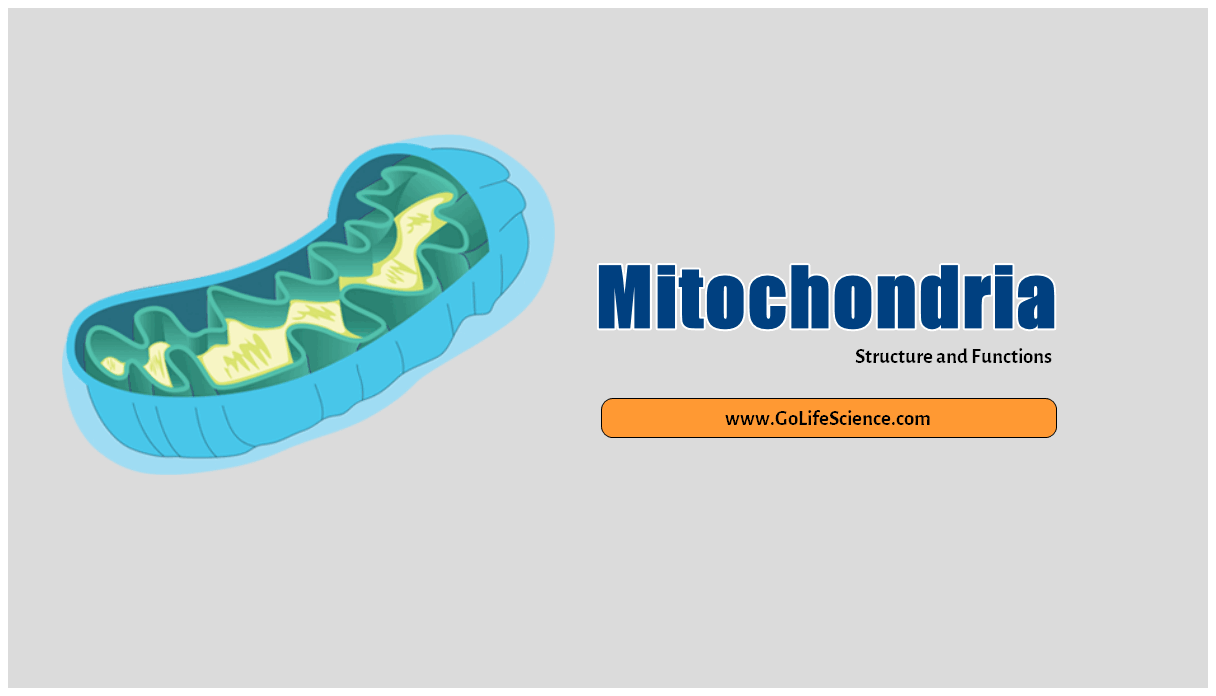
The cell membrane, also known as the plasma membrane, is a complex biological structure that surrounds and encapsulates all living cells. As the selective barrier between a cell’s interior and the outside environment, the cell membrane controls the movement of materials in and out of the cell and facilitates cellular processes essential for life.
An in-depth understanding of the cell membrane is crucial for fields ranging from cell biology to pharmacology. This article will provide an overview of the cell membrane, its components, functions, and role in human health and disease.
The cell membrane is composed of a phospholipid bilayer interspersed with various proteins, cholesterol, and carbohydrates. First observed in 1925 by scientists E. Gorter and F. Grendel, the lipid bilayer forms the basic structure of the membrane. Later advancements led to the fluid mosaic model, which describes the cell membrane as a fluid, selectively permeable barrier composed of a diverse array of lipids, proteins, and carbohydrates.
Beyond its role as a barrier, the cell membrane enables essential functions for life. The cell membrane controls material transport, cell adhesion, signaling, enzymatic activity, and more. Defects in the cell membrane can lead to numerous human diseases.
Understanding the cell membrane is also key for developing pharmacological interventions and drug delivery systems. Recent advances in membrane research have uncovered new insights using innovative technologies. As an intrinsically complex and dynamic structure, the cell membrane remains an important focus of biological research today.

Table of Contents
Structure of the Cell Membrane
The cell membrane has a complex molecular composition that suits its many purposes. The basic structure is the phospholipid bilayer, composed mainly of phospholipids with embedded proteins, cholesterol, and carbohydrates.
Phospholipid Bilayer
The cell membrane consists of the phospholipid bilayer as well as the integral and peripheral membrane proteins. This forms a selectively permeable barrier around the individual cell that allows essential nutrients and signals to enter within the cell while excluding unwanted material. The tails of the membrane phospholipids face inward towards the cell interior while the heads face the exterior to form the sheet-like barrier around the cell.
The fundamental structure of the cell membrane is the phospholipid bilayer. This bilayer is composed of two layers of phospholipid molecules oriented so that their hydrophobic hydrocarbon tails face inward, shielded from water, while their hydrophilic phosphate heads face outward to interact with the aqueous interior and exterior environments.
Phospholipids are amphipathic molecules with a glycerol backbone, phosphate group head, and two hydrocarbon tails. Common phospholipids include phosphatidylcholine, phosphatidylethanolamine, phosphatidylserine, and sphingomyelin. The hydrophobic interactions between phospholipid tails drive the spontaneous formation of the bilayer.
This bilayer forms a stable barrier between two aqueous compartments while enabling the lateral movement of components within the membrane itself. The phospholipid composition can also vary between organisms, tissues, and organelles to suit specific functions.
Membrane Proteins
Integral membrane proteins span across the membrane and serve as channels, carriers, receptors, and adhesion molecules that cross the membrane to communicate information and move molecules between the inside and outside of the cell. Peripheral membrane proteins attach to the inner or outer surface of the cell membrane and support membrane structure or linkage to the cytoskeleton.
While phospholipids form the basic bilayer matrix, proteins embedded within the membrane carry out most of the specific functions. Peripheral proteins attach loosely to the membrane surface, while integral proteins span the membrane and have both hydrophobic and hydrophilic regions.
These proteins have various roles, including cell signaling, material transport, enzyme activity, cell adhesion, and signal transduction. Certain specialized proteins can flip between membrane leaflets to catalyze transport. Glycoproteins and glycolipids containing carbohydrates also have important functions.
Around 50% of a membrane’s mass are proteins. Their various shapes, sizes, and distributions confer different properties.
Cholesterol and Lipids
Cholesterol, a sterol molecule, is also abundant in cell membranes, making up around 25% of human erythrocyte plasma membranes. Cholesterol intercalates between phospholipids and helps regulate membrane fluidity and permeability.
Various other specialized lipids like glycolipids and sphingolipids are also incorporated into cell membranes and concentrate in lipid rafts. Glycolipids contain a carbohydrate chain bound to a lipid backbone. Sphingolipids like sphingomyelin have a sphingosine backbone.
Fluid Mosaic Model
In 1972, S.J. Singer and G.L. Nicolson proposed the fluid mosaic model to describe the diverse composition and structure of the cell membrane. Like a mosaic, the membrane contains a complex assortment of components including phospholipids, proteins, ion channels, and carbohydrates. These components move laterally within a fluid phospholipid bilayer, giving the membrane flexibility and dynamic organization.
The components can also cluster together in functional lipid microdomains called lipid rafts. The fluid mosaic model remains the prevailing model for membrane structure today.
Functions of the Cell Membrane
The cell membrane carries out diverse essential functions for the cell. These include selective permeability, cell signaling, cell adhesion, membrane transport, and anchoring the cytoskeleton.
Selective Permeability
One of the most important functions of the cell membrane is controlling permeability. The hydrophobic core prevents the free passage of most polar molecules, making the membrane selectively permeable. Small uncharged molecules can diffuse through the membrane, while charged ions and large polar molecules require transport proteins like channels and carriers.
This selective permeability allows cells to maintain different compositions from their surroundings. Proteins embedded in the membrane determine which molecules can pass through and in which direction.
Cellular Communication
As the interface between a cell and its environment, the cell membrane plays a key role in cellular communication and signal transduction. Receptor proteins on the membrane bind signaling molecules like hormones and neurotransmitters, inducing intracellular signaling cascades that alter cell behavior.
The cell membrane also facilitates communication between neighboring cells via direct contact or chemical synapses. Transmembrane proteins mediate this cell-to-cell signaling.
Cell Adhesion
Cell adhesion molecules (CAMs) span the cell membrane and bind to CAMs on other cells for cell-cell adhesion. Cadherins, integrins, selectins, and other CAMs facilitate interactions between neighboring cells, enabling tissue structure and communication.
The glycocalyx, a glycoprotein/polysaccharide layer on the cell membrane exterior, also mediates cell interactions and adhesion.
Membrane Transport Proteins
The cell membrane contains diverse transport proteins that enable materials to cross the lipid bilayer. Channel proteins form hydrophilic pores that allow rapid down-concentration passage of ions and water.
Carrier proteins undergo conformational changes to transport molecules against their concentration gradient using cellular energy. Other transporters like ATP-binding cassette transporters harness ATP hydrolysis to pump compounds against a gradient.
Membrane Transport
The cell membrane controls exchange between the cell and its environment via passive transport down a gradient and active transport against a gradient. Endo/exocytosis also facilitate movement of materials.
Transport into the cell is regulated by the specific types of proteins in the cell membrane that form pores, carriers, pumps, and receptors to allow movement across the membrane. The fluid membrane bilayer provides the matrix for the diverse membrane proteins to carry out functions like cell signaling, adhesion, and material transport. By controlling permeability, the cell membrane allows the cell to maintain different conditions inside versus outside.
Passive Transport
Passive transport across the cell membrane moves solutes down their concentration gradient. It requires no energy expenditure by the cell. Types of passive transport include:
- Diffusion: Net movement of material from high to low concentration
- Osmosis: Diffusion of water across a semipermeable membrane
- Facilitated diffusion: Diffusion through specific transport proteins
Passive transport enables critical exchanged of gases, ions, and nutrients down their gradients.
Active Transport
Active transport moves solutes against their concentration gradient, requiring energy. Types of active transport include:
- Primary active transport: Direct transport using ATP, occurs via specific carrier proteins and pumps like the sodium-potassium pump and calcium ATPase.
- Secondary active transport: Indirect transport by coupling transport of one molecule against its gradient to movement of another down its gradient. An example is the sodium-glucose symporter, which couples glucose uptake to downhill sodium transport.
Active transport enables cells to maintain concentration gradients critical for their function.
Endocytosis and Exocytosis
Endocytosis is a form of active transport in which cells internalize molecules and particles by engulfing them with their membrane. Exocytosis releases molecules outward through fusion of vesicles with the cell membrane. These processes enable uptake and release of large materials.
Membrane Proteins and Their Functions
Membrane proteins carry out many essential functions. Major types include transporters, channels, receptors, enzymes, and cell adhesion molecules.
Ion Channels
Ion channels are pore-forming membrane proteins that allow rapid transport of ions down their electrochemical gradient. There are channels specific for sodium, potassium, calcium and chloride ions. Voltage gated channels open and close in response to changes in membrane potential.
Ion channels control and generate electrical signals in excitable cells like neurons and are targeted by many drugs.
Carriers and Transporters
Carrier proteins or transporters undergo conformational changes to transport molecules against their gradient using cellular energy. There are families of transporters for sugars, amino acids, nucleosides, and more.
ATP powered pumps like the sodium-potassium ATPase maintain concentration gradients of ions. ABC transporters utilize ATP hydrolysis to drive transport.
Receptor Proteins
Receptors bind specific signaling molecules and initiate signal transduction cascades that alter cell function. Receptor types include G protein-coupled receptors, receptor tyrosine kinases, and more.
Cell signaling via receptor binding controls critical activities like cell division, metabolism, and immune activation.
Enzymes
Many enzymes are integrated into the cell membrane with their active sites exposed to catalyze reactions at membrane surfaces. Membrane enzymes include phospholipase A2, adenylate cyclase, and diacylglycerol kinase.
Localized enrichment of enzymes in the membrane enables spatially organized biochemistry.
Cell Adhesion Molecules
Cell adhesion molecules (CAMs) mediate binding between cells through CAM-CAM interactions. Cadherins, integrins, and selectins are major types of CAMs that facilitate cell-cell junctions and communication.
The extracellular matrix also binds to membrane adhesion proteins like integrins to anchor cells.
Membrane Fluidity and Adaptation
The cell membrane exhibits dynamic fluidity that is modulated by lipid composition, temperature, and cholesterol content. Cells can adapt the membrane in a phenomenon called homeoviscous adaptation.
Factors Affecting Fluidity
Membrane fluidity is influenced by temperature, lipid composition, and cholesterol content. At lower temperatures, membranes become more rigid as lipid tails pack together. Higher temperatures increase molecular motion, making the bilayer more fluid.
Shorter, unsaturated hydrocarbon tails increase fluidity while longer, saturated tails reduce fluidity. Cholesterol intercalates between lipids and modulates packing and fluidity.
Homeoviscous Adaptation
To maintain proper membrane function, cells alter lipid composition to regulate fluidity in a process called homeoviscous adaptation. In cold environments, cells increase unsaturated lipid content to maintain fluidity. In warm environments, membrane lipid saturation is increased.
Fluidity impacts processes like cell signaling and transport that require mobility of membrane components.
Role in Health and Disease
Defects in the cell membrane are linked to many human diseases. The membrane is also the target for pharmacological treatments and drug delivery.
Membrane-Related Diseases
Abnormalities in membrane lipids, proteins, and transport can underlie certain diseases:
- Tay-Sachs disease: Defective lipid metabolism caused by enzyme deficiency.
- Cystic fibrosis: Mutated chloride transporter causes thick mucus.
- Epilepsy: Mutations in ion channels effect neuron signaling.
- Cardiomyopathy: Defects in proteins that anchor organelles to membrane.
Pharmacology
Many drugs target membrane proteins:
- Ion channel blockers treat arrhythmia and hypertension.
- G protein-coupled receptor agonists/antagonists modulate signaling.
- Antibiotics like penicillin inhibit cell wall synthesis.
Liposomal encapsulation improves drug delivery by mimicking the lipid bilayer.
Membrane Repair and Regeneration
Cells can rapidly repair torn membranes using endomembrane vesicle patches and phospholipid transport between leaflets. Understanding natural membrane repair mechanisms could lead to treatments promoting tissue regeneration after injury.
Recent Advances in Membrane Research
Recent technological innovations have opened new possibilities for understanding membrane structure and dynamics.
Single-Cell Analysis
New techniques like live-cell super resolution microscopy, single-molecule tracking, and patch clamp recording enable studying membranes with unprecedented detail in living cells.
Membrane Biophysics
Advances in membrane biophysics uncover new insights on membrane thermodynamics, permeability, curvature, and self-organization using approaches like molecular dynamic simulation.
Emerging Technologies
Novel technologies like microfluidics, optogenetics, and nanosensors offer new ways to study membrane function and leverage membrane physiology.
Difference between Cell Wall and Cell Membrane
The cell wall and cell membrane are two essential components of a cell. The cell wall is a rigid layer that provides support and protection to plant cells, while the cell membrane is a flexible barrier that encloses the cell and regulates the movement of substances in and out.
While both structures play crucial roles, they have distinct differences. The cell wall is composed of cellulose and is found in plant, fungal, and bacterial cells, whereas the cell membrane is made up of lipids and proteins and is present in all types of cells.
Furthermore, the cell wall is external to the cell membrane, adding an extra layer of protection.
Cell Wall
Description:
- The cell wall is a rigid, protective outer layer that surrounds the cell membrane in plant cells, fungi, and some prokaryotes.
- It provides structural support and protection to the cell.
- It is primarily composed of cellulose in plant cells, chitin in fungi, and peptidoglycan in bacteria.
Functions:
- Provides structural support and rigidity to the cell.
- Acts as a protective barrier against physical damage and pathogens.
- Allows cells to resist changes in osmotic pressure.
Location:
- Found external to the cell membrane in plant cells, fungi, and some prokaryotic cells.
Permeability:
- Relatively permeable to water and small solutes.
Cell Membrane
Description:
- The cell membrane, also known as the plasma membrane, is a semi-permeable lipid bilayer that encloses the cell’s cytoplasm.
- It is present in all types of cells, including animal cells, plant cells, and bacteria.
- Composed of phospholipids, proteins, cholesterol, and other molecules.
Functions:
- Regulates the passage of substances in and out of the cell, controlling the exchange of nutrients, ions, and waste products.
- Acts as a boundary that separates the cell’s interior from the external environment.
- Contains receptor proteins for cellular communication.
Location:
- Surrounds the cell’s cytoplasm and separates it from the extracellular environment.
Permeability:
- Selectively permeable, allowing some substances to pass through while restricting others.
Tabular Comparison:
| Characteristic | Cell Wall | Cell Membrane |
|---|---|---|
| Description | Rigid, protective outer layer | Semi-permeable lipid bilayer |
| Composition | Cellulose (plants), Chitin (fungi), Peptidoglycan (bacteria) | Phospholipids, proteins, cholesterol, other molecules |
| Functions | Provides structural support and protection | Regulates substance passage and cellular communication |
| Location | External to the cell membrane | Surrounds the cytoplasm |
| Permeability | Relatively permeable to water and small solutes | Selectively permeable, controlling substance exchange |
In summary, the cell wall is an external, rigid structure that provides support and protection, while the cell membrane is an internal, semi-permeable boundary that controls the passage of substances in and out of the cell. These differences are fundamental to the functioning and characteristics of different cell types.
Conclusion
The cell membrane, also called the plasma membrane, surrounds and encapsulates the interior of the cell, separating it from the outside environment. The structure of the plasma membrane is a phospholipid bilayer studded with various proteins that allow the cell to interact with its surroundings while maintaining control over material transport.
The cell membrane is one of the most important structures in biology. Composed of a phospholipid bilayer studded with proteins and carbohydrates, the membrane forms a selective permeability barrier and enables essential functions like cell signaling, transport, adhesion, and compartmentalization.
Membrane defects underlie many human diseases, and the membrane is a key pharmacological target. Ongoing research continues uncovering new insights into the cell membrane using emerging technologies. As an intrinsically complex and dynamic biological interface, the cell membrane sits at the heart of cellular and molecular biology.
Key Points
- The cell membrane is composed primarily of a phospholipid bilayer along with embedded proteins, cholesterol, and carbohydrates.
- It forms a selectively permeable barrier between the cell and environment.
- Diverse proteins carry out functions including transport, signaling, adhesion, and catalysis.
- The membrane controls exchange of materials, cell interactions, and transmission of cellular signals.
- Defects in membrane proteins and lipids cause diseases, and many drugs target membrane proteins.
- Advances in biophysics and molecular techniques continue unveiling new insights into membrane biology.
The cell membrane plays vital roles in compartmentalization, communication, transport, and energy transduction – supporting core processes of life via its unique structure at the interface between a cell and its environment.






